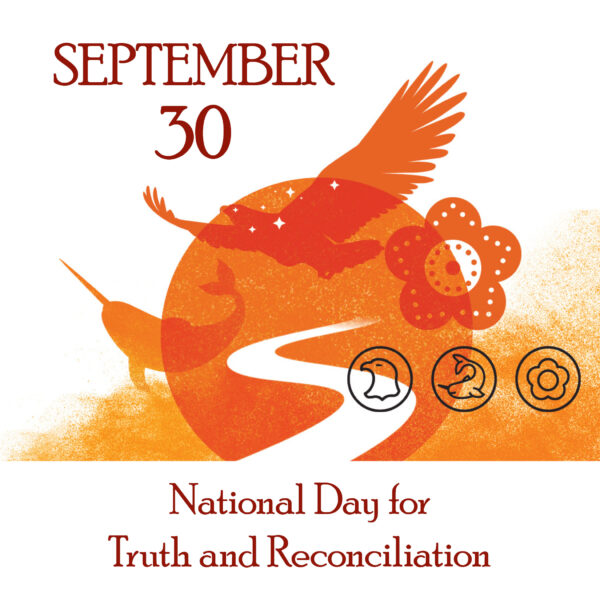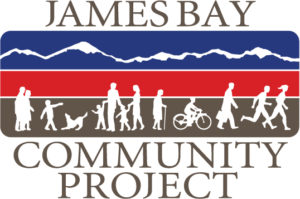The history of Canada’s residential schools is an important truth to acknowledge. Taking the time to learn is a positive step towards healing and reconciliation in our communities.
As part of your personal reconciliation practice, these are some ways to show your support on this day and every day:
- wear an orange shirt created by a local Indigenous artist or from an Indigenous-led business
- attend a National Day for Truth and Reconciliation event
- read about the First Nations people in your area
- participate in educational and acknowledgement events about First Nations people
- explore art by Indigenous peoples through music, literature, film, dance, traditional crafts and cuisine

Image ID – description of the three icons (from the Canada.ca website):
– The eagle to represent First Nations
– The narwhal to represent Inuit
– The beaded flower to represent Métis
Among the various visual elements illustrating Indigenous cultures, the circle is at the centre, which represents being together in spirit of reconciliation. The orange colour represents truth-telling and healing. The pathway represents the road to reconciliation. First Nations, Inuit and Métis are represented by the eagle, narwhal and beaded flower in the image. The stars represent the children who never made it home from residential schools.
#September30 #NDTR #NationalDayForTruthAndReconciliation #OrangeShirtDay #ResidentialSchools #EveryChildMatters #Reconciliation #ResidentialSchoolSurvivors #TruthAndReconciliationCommission #94CallsToAction #IndigenousPeoplesInCanada #FirstNations #Inuit #Metis #Lekwungen #Wsanec #Songhees #CoastSalish #Nuuchahnulth #Kwaskwakawakw

